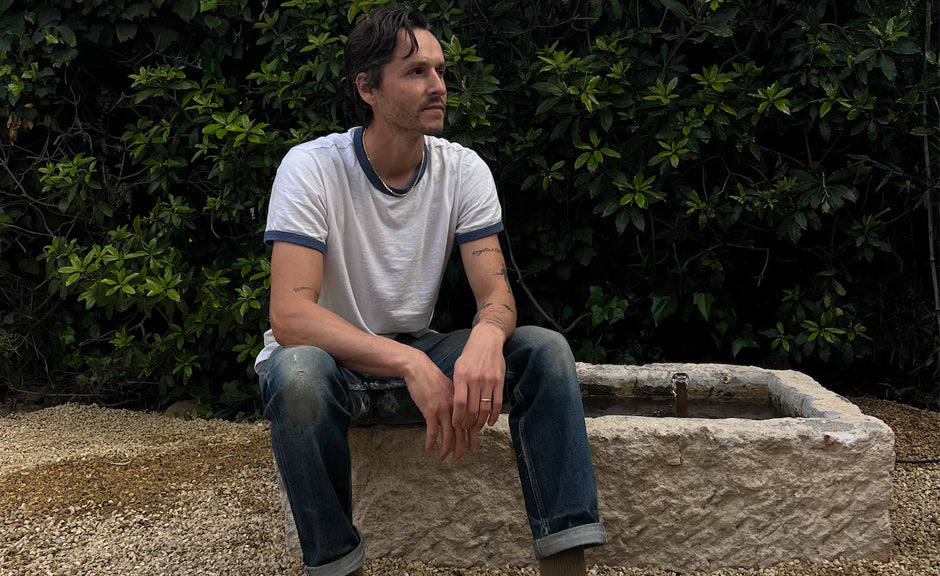We are in love with Olive Ateliers and have been coveting their antique limestone troughs for some time. We finally got the chance to get an appointment to pick out these troughs and some other objects for #casaplunkett. We got our hands on two incredible troughs (one cylindrical and one rectangular). My intention with these troughs was to use them as a focal point in our garden and also convert them into bubbler fountains. Many of you have asked how I converted the first trough into a fountain, so I wanted to share a DIY video and also step by step instructions on how to do this.
WATCH THE DIY VIDEO HERE
Tools & Supplies Needed:
The first thing you are going to want to do is make your supply list which I made for you below. I always try to support local business but I included our Amazon Associate links which helps support these blog posts.
*NOTE: these instructions and decisions I made are based off the material my specific trough is made out of. If your receptacle is made out of a different material you may need a different hole saw and different product to seal the hole. If you have no experience with DIY projects I'd consider hiring a handyman or a plumber.
* Additional supplies needed: razor blade, pen pencil, & rubber gloves
Step x Step Instructions:
NO. 1- DRILLING THE HOLE
Once you have your receptacle and supplies you are going to want to choose the placement of the hole you are going to drill for the pump plug to exit the fountain. Attach your bit to the drill and make sure the drill is on the rotary + hammer setting. Remember to protect your eyes and ears, and you may even want to wear a mask for the dust. Once the hole is drilled make sure the plug will fit through. Once you've confirmed the plug fits, position your pump and make sure you leave a few inches of extra slack before the next step
NO. 2- POSITIONING THE PUMP
I recommend using two weights (like a rock or a brick) to weigh down the power cord before this next step. One on the inside of the power chord and one on the outside; that way it does not move during the drying process of the Flex Glue.
NO 3.- SEALING HOLE WITH FLEX GLUE
Once you have the pump position with a few inches of extra slack you are going to need to seal the hole. Grab the Flex Glue and caulking gun. Next, you need to cut the tip of the Flex Glue and puncture the tube with the poker on the caulking gun. Note: you might want to wear rubber gloves and have a damp rag handy. Attach the Flex Glue to the caulking gun and fill the hole on the inside with a generous amount of Flex Glue. Once the hole is filled continue applying the product on the inside wall surrounding the hole making sure all of the glue is connecting creating a water barrier. Now, repeat this process from the outside of the fountain.
NO 4- LET THE FLEX GLUE CURE
Once the first coat is applied, you need to let it dry (see instructions). Note: I recommend applying a second (generous!) coat on top of the first coat, and wait for this to cure before moving on to the next step.
NO 5.- MEASURE & DESIGN THE COPPER LAYOUT
Once your Flex Glue is dry, you’ll need to figure out your design. I wanted three bubblers for this particular trough, but the last trough bubbler I created was just a single piece of copper. In the video you can see the design I came up with.
To do this I suggest starting with your vertical pieces. I had mine sticking out of the water about 2-3”. When measuring this make sure you compensate for the elbow thickness. Once you have your vertical pieces cut dry fit the fittings (ie: elbows, tees. etc.) and lay them out on a flat surface. I used a scrap piece of Ram Board.
This allowed me to lay out my vertical pieces and have them evenly spaced so that I can measure for the connecting copper pieces, and the connection to the pump. Having a surface like a Ram Board allows you to mark with a pen or pencil helping your measurements. Note: when measuring make sure you are including the depth (the male end of the copper will feed into the female fitting).
NO.6- CONNECT THE PUMP THREADED PLASTIC FITTING TO THE COPPER
Once you have your measurement and design layout you should have figured out the line that connects to the pump. Attach this piece of copper to the plastic threaded fitting That came with the pump. Mine fit on the inside of my copper pipe. Note: before installing this piece I recommend applying Flex Glue to the plastic fitting. Attach this piece and add a generous amount of Flex Glue to the outside of the joint. I recommend doing this step of the process at the same time as sealing the hole, that way you don’t need to wait additional days for this to dry.
NO.7- PREPARE TO SODER THE COPPER PIECES TOGETHER
Now it’s time to connect all of your pieces. If you don’t have any experience with soldering copper or need to refresh your memory, I suggest watching this tutorial HERE.
NO.8- TIME TO SODER!
Solder all of your pieces together!
NO.9- CONNECT TO THE PUMP
NO.1O- ALMOST DONE!
Fill with water, turn the pump on and enjoy your hard work with favorite drink in hand.
Cheers!
Have questions? Head over to our Instagram and send us a DM!

